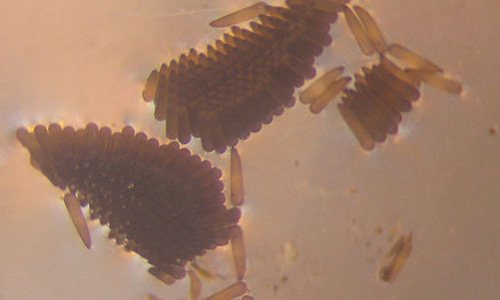Mosquito eggs don't sound very exciting, but the ability of a mosquito to reproduce and the areas in which they can lay eggs is almost mind-boggling. Here in Florida, the environment is perfect for mosquito reproduction and laying eggs. After a mosquito egg is laid, it can lie dormant for up to several months, even a year are more, until a time when water washes over them.
Mosquitoes can lay eggs year round, and all it takes is the introduction of water and the lifecycle of the mosquito takes off. Adult mosquitoes mate within the first few days after emerging. The male locates the females by listening for the sounds of their wings, which run flap up to 500 beats per second. The mosquitoes join in-flight; the male passes sperm to the females, perpetuating
the mosquito lifecycle. The male dies shortly after mating occurs. Female mosquitoes have the capability of laying up to 100 - 300 eggs every 7-10 days after mating only once, and will typically lay 3 to 5 groups of eggs in their lifetime.
Mosquitoes lay their eggs on the surface of fresh or stagnant water and damp ground. The water can be in tin cans, barrels, a hole in a tree, horse troughs, ornamental ponds, swimming pools, puddles, creeks, ditches, catch basins or even saltwater marsh areas. Mosquitoes prefer water sheltered from the wind with grass and weeds. Some mosquitoes have the ability to lay their eggs
on just damp soil; with some eggs being able to resist drying out, until the areas are flooded by water from rains or tidal flow. The Florida Department of Agriculture, in a study to count the number of mosquito eggs in a Central Florida pasture, estimated 100,000,000 eggs per acre in sod samples that were taken. Mosquitoes usually lay their eggs at night. They lay their eggs one at a time, sticking
them together to form a raft of 100 to 300 eggs at a time. The raft of eggs looks like a speck of soot floating on the water and is about a quarter inch long and an eighth of an inch wide. |





